#kushite art
Explore tagged Tumblr posts
Text
Cleopatra & Amanirenas versus the Romans
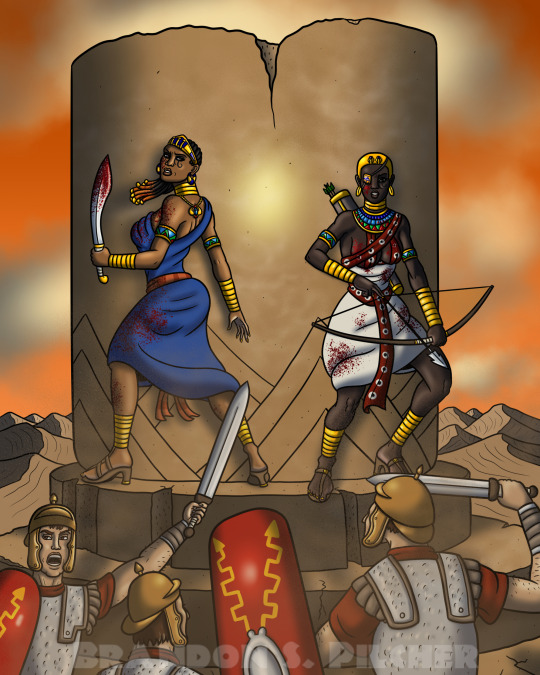
The Nile Valley queens Cleopatra of Egypt and Amanirenas of Kush are up against the wrath of the Roman legions! Can our heroines fight their way out of this predicament and defeat one the mightiest armies in the first century BC?
This is of course a fictional “alternate history” scenario I did for the sheer fun of it, but I really like the idea of Cleo and Amani teaming up against Rome. One wonders whether Cleopatra’s Egypt might have held up a little longer with more Kushite support…
#cleopatra#ancient egypt#egyptian#kemet#amanirenas#ancient kush#kushite#nubian#african#black women#women of color#warrior women#ancient rome#roman#legionaries#fantasy#alternate history#digital art#art#illustration
40 notes
·
View notes
Text
A drawing I made for Lord Apedemak

May he like it
#kushite polytheism#kingdom of kush#kushite#kushite pagan#kushite paganism#kushite religion#the kingdom of kush#kemetic#lord apedemak#Apedemak#apedemak#lion#deity worship#deity#apedemak deity#deity devotion#own work#artists on tumblr#devotional art#devotional acts
14 notes
·
View notes
Text

Queen Amanitore from Civilization VI by Kat Nicole Berkley
#Kat Nicole Berkley#civilization vi#civilization 6#Nubia#Amanitore#art#artwork#meroë#kushite#queen#games#female characters#african queen
2 notes
·
View notes
Photo
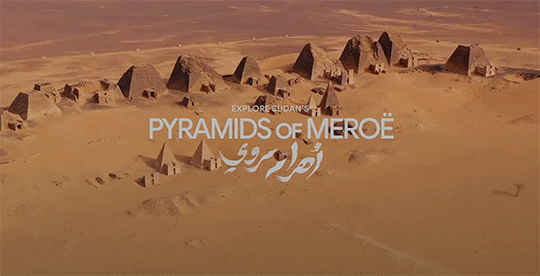
explore sudan’s pyramids of meroë
#gif#MEROË#sudan#PYRAMIDS OF MEROË#nubian pyramids#africa#ancient civilizations#unesco#google#google arts & culture#web experience#interactive experience#art experiments#kushite kingdom#meroe#desert#landscape#culture#pyramids#desktop experience#architecture#elements#check it out it’s really cool
6 notes
·
View notes
Text
1 note
·
View note
Text

Menat of Taharqa: the King Being Nursed by the Lion-Headed Goddess Bastet, implying his divine status.
The delicate faience material indicates the menat was not meant for use as part of a menat necklace shaken in temple ceremonies, but rather might have been a temple donation or possibly intended for the pharaoh's burial.
Third Intermediate Period, 25th Dynasty (Kushite), ca. 690-664 BC. Now in the Metropolitan Museum of Art. 41.160.104
71 notes
·
View notes
Text
The Roman Pharaohs of Ancient Egypt
In ancient history the pharaoh was the head of state and ruler of the country. However, he was not just a secular ruler, but a divine being on Earth who acted as an intermediary between the spiritual world and the earthly world. In essence he was a mortal representative of the gods. Interestingly, one did not have to be an Egyptian to be an Egyptian pharaoh. The act of conquering and ruling Egypt qualified one to be a pharaoh. As a result there were many foreign pharaohs throughout Egyptian history including those who were Persian, Nubian, Libyan, Hyksos, Kushite, and Macedonian Greek.
In 30 BC Cleopatra VII became the last ruler of Egypt from the Macedonian Greek Ptolemaic Dynasty. Cleopatra had backed the losing side of a Roman civil war, opposing Octavian and supporting Marc Antony. Octavian won, she was deposed, she committed suicide, and Egypt became a Roman province. When Octavian became Augustus and founded the Roman Empire, the Egyptians also recognized him as the official Pharaoh of Egypt. Afterwards successive Roman emperors were also declared pharaohs, until around the 4th century when Christianity became the dominant religion in Egypt.
Truth be told, most if not all Roman emperors didn't give a damn about being pharaohs. Most emperors never even stepped foot in Egypt and it didn't seem like they took their role as pharaoh very seriously. Regardless Egyptian iconography and art was crafted depicting Roman emperors in Egyptian style wearing Egyptian royal regalia and interacting with Egyptian gods. Some interesting examples are...
Gigachad Pharaoh Augustus
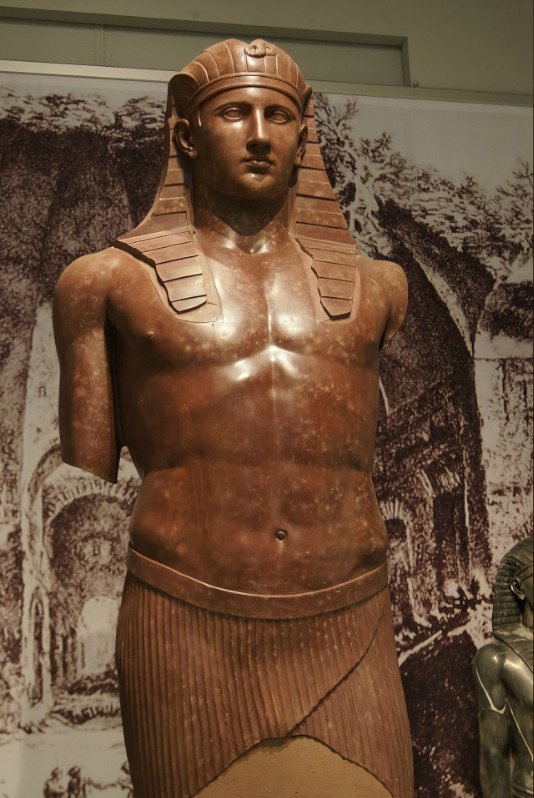
Tiberius
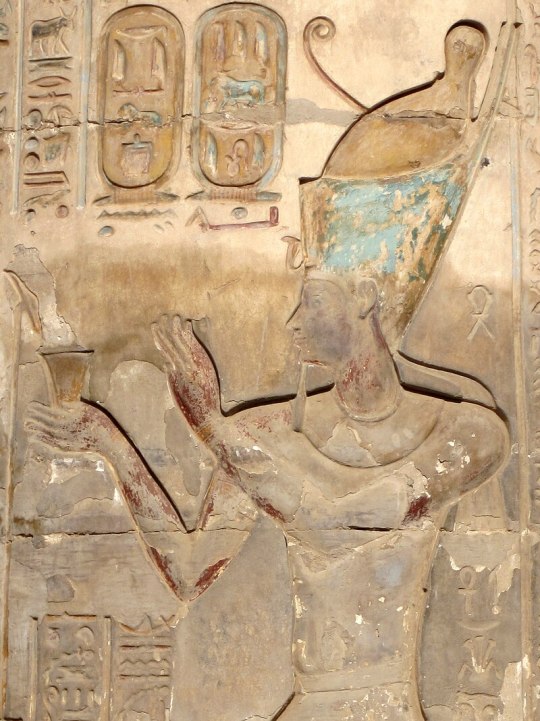
Nero
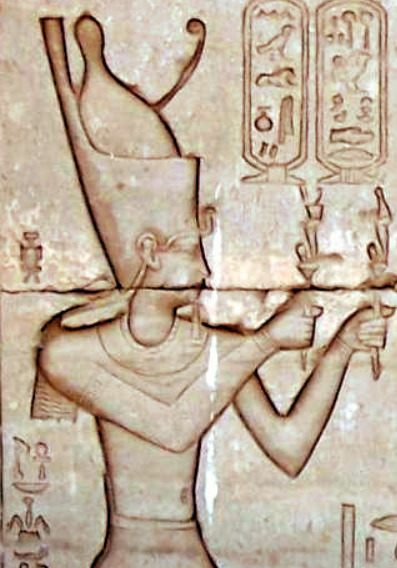
Nero again

Trajan making sacrifices to Hathor

Domitian
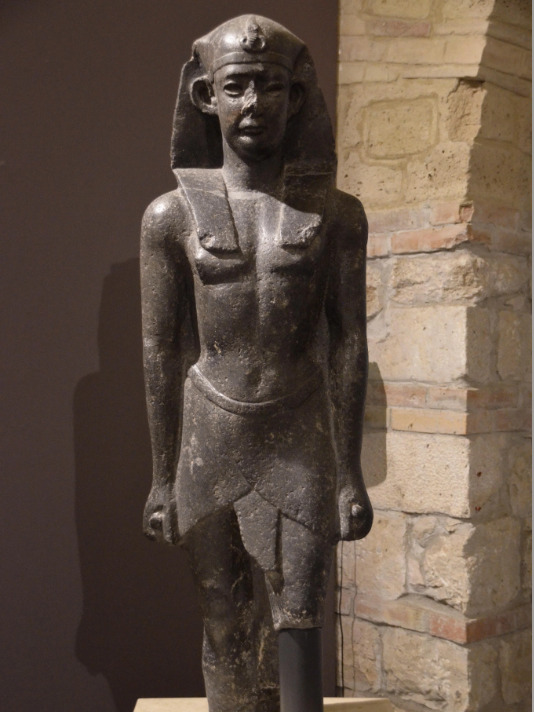
Domitian with Horus

Caracalla
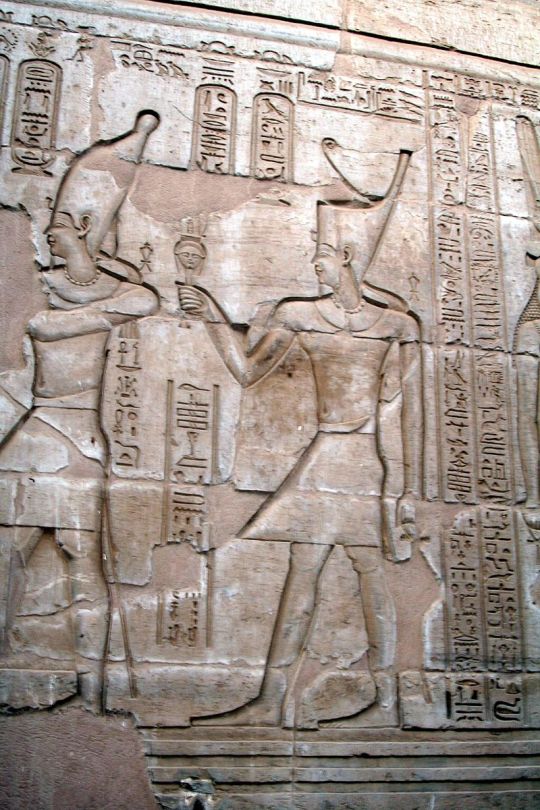
Marcus Aurelius

168 notes
·
View notes
Text

being an art historian is so funny. I accidentally learned that Sephora the store is named after the shockingly beautiful, Marian archetype Zipporah, the Kushite/Sudanese woman who Moses was married to, because of how often she is whitewashed by renaissance painters.

ahh yes what a beautifully Petrarchan Sudanese woman, thank u botticelli. he gives her the rod of aaron but hmmm he doesn't seem to remember the kush kingdom existed. lol.
Something else I hate is how often her part in the Song of Songs, Nigra Sum ("I am black and I am beautiful") a Marian liturgical lyric, is given to a male voice.

Monteverdi you were so close! she's suppossed to be a soprano <3
25 notes
·
View notes
Text
I've been asked to weigh in.
So.
No, Cleopatra wasn't black. She wasn't even African. Her family was Macedonian Greek, and they were infamously the most incestuous family in Egyptian history. No African DNA got in there. People who saw her while she was alive described her as having, "honey skin." She wasn't Elizabeth Taylor white, but she also wasn't what we'd call black.
That being said, there are PLENTY of Black figures in Egypt. The further back you go in Egyptian history, the less amount of trade routes with other nations, the more African they were. That means that the pyramid builders like Khufu, Khafre, and Menkaure were all likely black. Hatshepsut, the first woman to rule in her own right who established highly successful trade routes with Punt, was likely black. Tutankhamun's grandmother Tiye has always been depicted with dark skin. Queen Ahmose Nefertari was depicted as this:
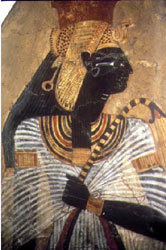
Then there's the entire Kushite Dynasty from Sudan who were black. This was a non-issue for Egypt. The biggest issue was if you worshipped their gods and respected their ways. If you did, then you were in. Alexander the Great was received like a hero because of this while the Persians were hated because of their disrespect for Egyptian culture.
3. Egypt even had what historians considered to be Asian rulers. The Hyksos invaders who ruled Egypt were from West Asia and some historians have posited that they were from the Indian subcontinent. (This has not been confirmed.)
Egypt was a melting pot with people from all over because of the lucrative trade routes. They were ruled by Greeks, Romans, Persians, Assyrians, Kushites, Hyksos, Libyans, etc. They had a blended culture.
So, it is interesting to me that this documentary chose a woman who was very clearly documented to NOT be black when Egypt has no shortage of Black figures to choose from. You'd think you'd want to tie yourself to the great legacies like Hatshepsut who made Egypt wealthy and stable over Cleopatra who lost Egypt its independence.
4. The one thing I CAN say for certain is that the actual Egyptians were NOT white. When I hear conspiracy theories that Ramses II was white from Scotland because he had red hair, it makes me so angry. They were not. Great things can and did come for non-white nations. Writing, language, government, medicine, etc ALL came from non-white nations. Egyptians referred to the Celts as Barbarians for a reason. Cleopatra, while she ruled Egypt, was NOT Egyptian. And that always gets forgotten. She hailed from a conquerer's line, not Egypt itself.
The thing about Egypt was they realistically depicted skin-color in Egyptian art. Maybe one day we'll find something of Cleopatra that will put this to rest. All we know is that her coinage shows her with distinctive European features, like a long, narrow, hooked nose. She has her hair in the Greek style.
343 notes
·
View notes
Text
{💨🛸🛕🛕🛕💭👣👣👣🪽👁️}This is called spiritual science and not religion or just spirituality, is because the Kushite-Kemetics united science with spirituality. The ntchr reflect concepts in our spirit and the physical world. It was through the symbology of the ntchru that our ancestors discussed quantum physics, chemistry, and biology.
Studying science is the true worship of Amun-Ra, the Supreme Being. In the Ancient Nile, we did not engage in mysticism, the Creator was not a mystery to be decorated with superstition. We understand the Creator through understanding the Creation. This is science. Science does not disprove the Creator. Science is the evidence of the Creator.
Because we have relinquished our leadership of scientific study in the world, we have lost understanding of the Creator. It is pivotal that we not relegate the Kushite-Kemetic system to the realm of mysticism, it is first and foremost the science of the powers of Amun-Ra in the universe and self. While the arts are very important in the realm of psychological control.

19 notes
·
View notes
Text

Gilded silver amulet shows the Kushite Queen Nefrukakashta being embraced and nursed by a goddess, probably Hathor. Nubian, Napatan Period, reign of Piankhy (Piye), c. 743–712 B.C. From el-Kurru, Ku 52 (tomb of Queen Nefrukekashta) Museum of Fine Arts, Boston. 24.928 The goddess wears the vulture headdress and a crown consisting of a diadem with bovine horns and the solar disc. A protective vulture flies above the queen, its claw resting on her royal uraeus cobra. https://egypt-museum.com/hathor-suckling-the-kushite-queen-nefrukakashta/
17 notes
·
View notes
Text

Queens of the Nile Mug Design
This is a design for a large coffee mug sporting the faces of the historical Nile Valley queens Cleopatra VII of Egypt (left) and Amanirenas of Kush (right). The vertical gold bar you see in the middle there is supposed to represent the mug’s handle. The inspiration for this came from a type of pottery the ancient Greeks would make known as “janiform” pottery which would each have the face of a dark-skinned African person on one side and the face of a lighter-skinned (most often Greek) person on the other.
#cleopatra#amanirenas#ancient egypt#egyptian#ptolemaic#ancient kush#kushite#nubian#african#black women#women of color#dark skin#bipoc#mug design#coffee mug#design#digital art#art
10 notes
·
View notes
Text
Apedemak

Lord Apedemak is the kushite (especifically meroitic) god of war, protection, courage, crops, nourishment, life, fertility, the sun and rulership. He was the patron god of the royal dynasty of ancient Meroe and eventually rose as the main god of the pantheon. His consort is Lady Amesemi.
His main temple is the Lion Temple at Musawwarat es-Sufra, in what today is Sudan

there, a hymn to him reads:
"[the god] who provides nourishment for all mankind in his name of 'one awakening unharmed'...lord of life'."
He's also dear to me, and I'm glad to call him one of my deities
#Apedemak#apedemak#lord apedemak#kushite pagan#kushite paganism#kushite polytheism#kushite religion#kushite#meroe#nubia#the kingdom of kush#kingdom of kush#kush#punt#meroitic art#meroitic#pagan#paganism#pagan revivalism#pagan reconstructionism#polytheism#polytheist#deity#deity worship#e offering#lion
4 notes
·
View notes
Text

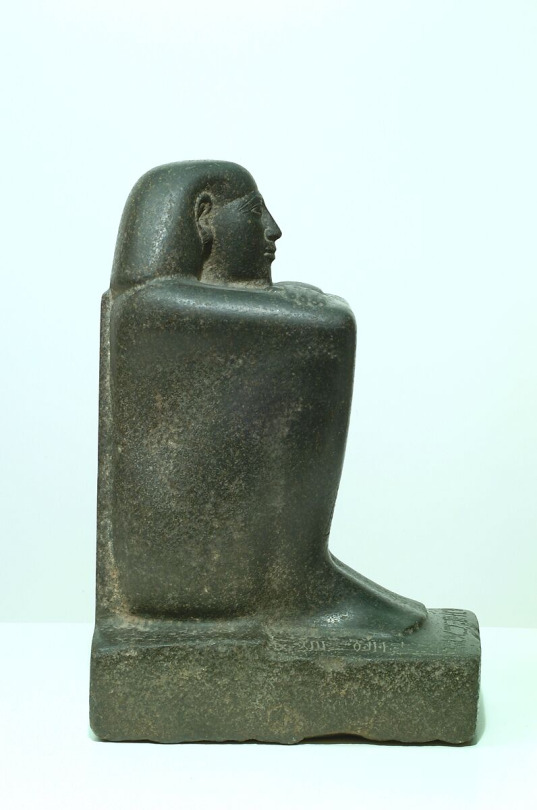

Block Statue of a Prophet of Montu and Scribe Djedkhonsuefankh, son of Khonsumes and Taat
Late Period, Kushite–Saite
690–610 B.C.
On view at The Met Fifth Avenue in Gallery 125
In the late 25th dynasty and early 26th Dynasty the austere beauty of the block statue form, here particularly enhanced by the hard gleam of dark surfaces, was greatly appreciated. The form puts a strong emphasis on the face and complements the often stern countenances favored at the time. The front of the statue gives the names, titles and parentage of Djedkhonsuiuefankh, son of Khonsumes and Taat. Djedkhonsuiuefankh can be linked to a multigeneration illustrious family of priests at Thebes. On the top of the base is an appeal to the living, a request for offerings to those who would pass the statue where it was placed in Luxor Temple. On the back pillar is an inscribed formula known as the Saite formula.
Artwork Details
Title: Block Statue of a Prophet of Montu and Scribe Djedkhonsuefankh, son of Khonsumes and Taat
Period: Late Period, Kushite–Saite
Dynasty: Dynasty 25–26
Date: 690–610 B.C.
Geography: From Egypt; Made for Upper Egypt, Thebes, Luxor
Medium: Gabbro
Dimensions: h. 30.7 cm (12 1/16 in)
Credit Line: Rogers Fund, 1907
Accession Number: 07.228.27
Provenance: Purchased from M. Casira, Egypt, 1907.
Source: https://www.metmuseum.org/art/collection/search/547694
4 notes
·
View notes
Text
Week FOUR of AMG®'s 7 DAY AUCTION
follow the link
Place Your Bid NOW!
0 notes
Text

Golden Ram's-head Amulet
This amulet was probably made for a necklace worn by one of the Kushite kings. Representations show these pharaohs wearing a ram's-head amulet tied around the neck on a thick cord, the ends of which fall forward over the shoulders. Sometimes a smaller ram's head is attached to each end. Rams were associated with the god Amun, particularly in Nubia, where he was especially revered.
During the 25th Dynasty of ancient Egypt, also known as the Kushite Dynasty, ram pendants continued to be popular symbols of power, protection, and divine connection. The Kushite rulers, who were of Nubian descent, incorporated elements of both Egyptian and Nubian culture into their jewelry and artifacts. Ram pendants during this period may have featured a blend of Egyptian and Nubian artistic styles, reflecting the cultural fusion of the time. These pendants likely held similar symbolic meanings as in earlier periods, representing strength, fertility, and the divine authority of the rulers.
Third Intermediate Period, 25th Dynasty, ca. 712-664 BC. Possibly from Nubia. Now in the Metropolitan Museum of Art. 1989.281.98
Read more
48 notes
·
View notes